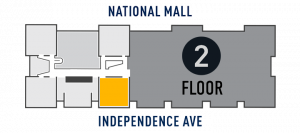The GLU-925 Multi-Mode Receiver (MMR) is the first certified example of an integrated navigational system that incorporates signals from multiple types of navigational and landing systems, including GPS [WAAS and LAAS], GNSS, VOR, MLS, ILS, and integrating them into a single presentation and using the combination of signals to verify the accuracy of others. This allows an air-transport aircraft to use the most adventageous form of navigation, without having to add additional equipment, regardless of where they are in the world. Different nationalities often favor different technologies, sometimes for purely political reasons. The GLU-925 marks the first time that a navigational set has been certified for LAAS capability. LAAS utilizes a GPS differential to provide precision vertical azimuth guidance during landing. This allows air-tranpsort aircraft to make "Cat III" type blind landings with significantly less infrastructure than previous ILS-based procedures. This system will allow much lower landing minimums at a far greater number of airports and will improve the the efficiency of air traffic networks.
Display Status
This object is on display in One World Connected at the National Air and Space Museum in Washington, DC.

Object Details
Date
2004-2005
Country of Origin
United States of America
Type
AVIONICS-Electronic/Satellite Navigation
Manufacturer
Rockwell-Collins
Physical Description
Black box flight test unit used in certification trials
Dimensions
3-D: 37.5 × 20 × 9.2cm (1 ft. 2 3/4 in. × 7 7/8 in. × 3 5/8 in.)
Materials
Non-Magnetic White Metal
Paint
Ink
Adhesive Stickers
Inventory Number
A20060148000
Credit Line
Gift of Rockwell-Collins
Data Source
National Air and Space Museum
Restrictions & Rights
Open Access (CCO)
For more information, visit the Smithsonians Terms of Use.